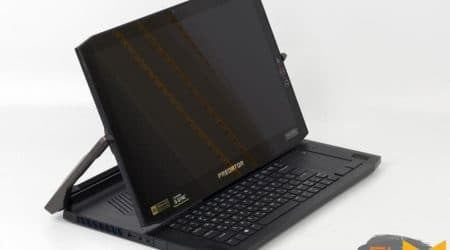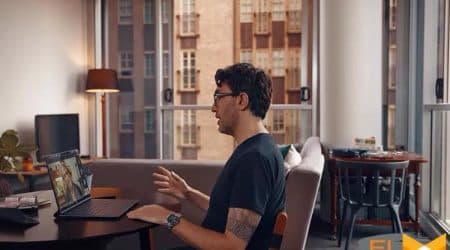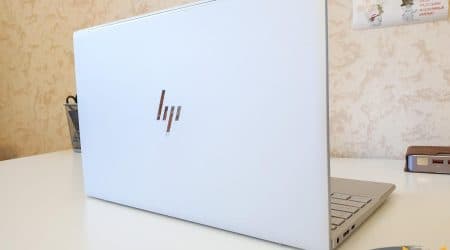Staying in a new place can be both exciting and nerve-wracking, especially when it comes to personal privacy. While most hosts are genuine and respectful, there may be circumstances where an individual wishes to ensure that their surroundings are free from unwanted observation. Ensuring a secure environment is essential for enjoying a worry-free stay, and knowing how to spot potential intrusions can significantly contribute to peace of mind.
Many travelers might not consider the possibility of surveillance equipment being present in their short-term lodgings. With the rise of technology, such devices have become increasingly compact and difficult to notice. Travelers can take proactive steps to safeguard their privacy and stay aware of their surroundings, allowing them to enjoy their stay without fear of being monitored.
Awareness and vigilance are key components when it comes to maintaining one’s confidentiality in an unfamiliar setting. By learning simple yet effective strategies to uncover any suspicious objects or technologies, visitors can make their experience more enjoyable and secure. Taking the time to understand what to look for can empower individuals and ensure a comfortable atmosphere during their stay.
Common Signs of Secret Cameras
Understanding the subtle indicators of surveillance devices can provide peace of mind and security during your stay. Recognizing the typical features and abnormalities within your surroundings is crucial for ensuring privacy, especially in unfamiliar environments.
Unusual Objects
Keep an eye out for any items that seem out of place or have been altered. Small gadgets that resemble everyday objects may serve as disguises for recording technology. Additionally, things such as smoke detectors, alarm clocks, or air purifiers should be examined closely, as they might harbor hidden functionalities.
Suspicious Light Indicators
Many recording devices feature indicators that can emit light when in operation. During your inspection, check for subtle glows or reflections that could signal the presence of such equipment. These lights usually become apparent in low-light conditions and can be important clues to the existence of uninvited observation.
| Signs | Description |
|---|---|
| Unusual Objects | Items that appear altered or out of place, resembling everyday objects. |
| Suspicious Light Indicators | Glimmers or reflections in low-light conditions that suggest active recording devices. |
| Wires or Cables | Visible wiring that seems unnecessary or poorly concealed might indicate surveillance equipment. |
| Frequent Outlets | Count and inspect electrical outlets; a higher number than expected could imply hidden devices. |
Utilizing Technology to Find Cameras
Advancements in modern technology have made it increasingly easy to identify surveillance devices in various environments. By leveraging specific tools and applications, individuals can enhance their awareness and ensure a more secure atmosphere during their stay.
Mobile Applications and Detection Tools
Numerous mobile applications are designed to aid in uncovering surveillance equipment. These apps can scan for signals and indicate the presence of various devices. Users can also utilize Wi-Fi network analysis tools to identify unfamiliar connections that may signal the presence of recording equipment.
Optical Sensors and Laser Scanning
Utilizing optical sensors, individuals can spot lenses that are not immediately visible to the naked eye. Laser scanning techniques can also reveal reflective surfaces that may indicate the placement of recording devices, offering an additional layer of security. By employing these technological methods, one can significantly minimize potential privacy invasions.
Manual Inspection Techniques Explained
Ensuring a secure environment involves thorough examination methods that help identify potential surveillance devices within a space. By employing systematic approaches, individuals can enhance their awareness and comfort during their stay. This section outlines practical strategies for physically inspecting areas that may conceal electronic monitoring tools.
Visual Assessment
Conducting a comprehensive visual check is a fundamental step. Begin by scanning the room for unusual objects or anomalies, such as small holes, unusual placements of decor, or out-of-the-ordinary objects that seem out of place. Pay close attention to light fixtures, smoke detectors, and electrical outlets, as these are common locations for surveillance devices. Look for any signs of tampering or modifications in these areas.
Utilizing Advanced Tools
While a keen eye can reveal many insights, utilizing specific tools can enhance inspection efforts. A smartphone camera can be beneficial; by adjusting the settings to night mode, you might reveal reflective surfaces associated with electronic devices. An LED flashlight is another handy implement; shining it at various surfaces can uncover lens reflections that are often overlooked. Using a radio frequency (RF) detector can also aid in identifying signals emitted by surveillance technology, providing additional assurance of privacy.
Understanding Camera Types and Features
In the realm of surveillance technology, various devices exist with distinct characteristics and functionalities. Familiarity with these can significantly enhance awareness and vigilance regarding potential monitoring equipment present in living spaces. Each variant boasts specific traits that influence its application and placement, catering to diverse needs and environments.
Traditional devices often feature conspicuous designs, making them easier to identify. Conversely, modern innovations have led to the development of more discreet models, often resembling everyday objects. These can include items like smoke detectors, alarm clocks, or even household electronics, blending seamlessly into their surroundings.
Functionality also varies widely among different device types. Some are equipped with night vision capabilities, allowing for operation in low-light conditions, while others may have motion detection features that trigger recording upon sensing movement. Understanding the range of options available can aid in recognizing the potential presence of surveillance technology.
Additionally, the connectivity and storage methods of these devices play a significant role in their operation. Wireless models can transmit data in real-time, while those with local storage may require physical access for retrieval. Being aware of these distinctions can contribute to a comprehensive assessment of the environment.
Legal Rights Regarding Privacy in Rentals
Understanding the legal framework surrounding privacy in rental properties is essential for anyone engaging in short-term leasing. Tenants possess certain rights that safeguard their personal space and ensure a secure environment during their stay. Awareness of these entitlements can significantly enhance the overall experience while fostering a sense of safety and trust.
Tenant Rights
Renters are entitled to certain privileges that protect their privacy. These rights often include the freedom from unwanted surveillance and assurance that their living area remains private. It is critical to consult local regulations, as laws concerning privacy can vary significantly by jurisdiction. Many areas enforce strict guidelines that property owners must adhere to in order to maintain a respectful and lawful rental experience.
Landlord Obligations
Property owners have a responsibility to uphold the privacy of their guests. This entails disclosing any monitoring devices that may be in place, as well as ensuring that none are used in private spaces such as bedrooms and bathrooms. Failure to comply with these obligations may lead to potential legal repercussions and damage to the rental business’s reputation. Understanding these obligations promotes a respectful and trustworthy relationship between landlords and renters.
Reporting Suspicious Activity Effectively
Addressing unusual occurrences promptly and efficiently is essential for ensuring safety and security in any lodging arrangement. When guests observe something that raises concerns, taking appropriate actions can help protect oneself and others. Clear communication and timely reporting can lead to swift resolutions and maintain a safe environment.
When noticing something alarming, document every detail meticulously. Take notes on specific circumstances, including dates, times, and descriptions of the events or objects that seem out of place. This factual information can be invaluable when conveying your concerns to relevant authorities or representatives of the establishment.
Approach the situation with a calm demeanor when discussing your observations. Maintain a professional tone while expressing your worries to the property owner or management. Engaging in constructive dialogue can enhance the likelihood of receiving a supportive response and prompt action.
If initial conversations do not yield satisfactory results, escalate the matter to local law enforcement or consumer protection agencies. These organizations can provide further assistance and help address potential violations or threats. Your safety is paramount, and reaching out to the right channels can ensure that issues are resolved appropriately.
Lastly, consider sharing your experiences on review platforms or social media to raise awareness among future visitors. Your insights may provide crucial information for others, helping them to make informed choices regarding their accommodations.
To find hidden cameras in an Airbnb or rental home using your mobile phone, turn off all the lights in the room and use your phone’s flashlight or front-facing camera to scan for reflections that might come from a camera lens. Hidden spy cameras often emit infrared light, which can be detected with your phone’s camera in dark conditions. Additionally, apps like Fing can help you see what devices are connected to the WiFi network, including potential hidden surveillance cameras.
Hidden cameras are often placed in common areas like living rooms, but in some cases, they may be hidden in private areas like bedrooms and bathrooms, which violates the reasonable expectation of privacy. Cameras can be hidden inside objects like picture frames, clocks, or even smoke detectors. Check around the room carefully, especially in places where a camera might have a clear view of the space.
To detect hidden surveillance cameras using a router or WiFi network, you can use apps like Fing, which scan the network for all connected devices. Hidden cameras that are connected to the network will appear on the list of devices. Look for any unfamiliar or suspicious devices that could be wireless cameras connected to the router in the rental home. This is a simple way to spot hidden cameras in an Airbnb or other rental service.
To check for hidden spy cameras in hotel rooms or Airbnbs, start by visually inspecting the room for any suspicious objects like picture frames, smoke detectors, or lights that may hide a camera. Turn off the lights and use your phone’s flashlight or front-facing camera to look for reflections from camera lenses. You can also use a camera detector or apps like Fing to scan for hidden wireless devices connected to the network. Lastly, if you spot any suspicious devices, contact Airbnb directly to report the issue.
To find a hidden camera inside an Airbnb or VRBO rental, you can take several steps. First, check for cameras in areas where they might be hidden, such as in clocks, picture frames, or smoke detectors. You can also use a hidden camera detector or your phone’s camera to scan the room. Hidden security cameras often emit infrared light, which is invisible to the human eye but can be detected using your phone’s front-facing camera in a dark room. Make sure to look for hidden cameras in areas like bedrooms and bathrooms.
To check for hidden cameras inside an Airbnb or VRBO, visually inspect the rental for any suspicious objects, especially in private areas. Look for hidden cameras that might be concealed in common items like alarm clocks or air vents. You can use your phone’s camera to detect infrared lights emitted by hidden cameras, or use Bluetooth scanning to see if any wireless devices are connected. Always check the rental’s WiFi network for unfamiliar devices, which might indicate hidden security cameras.
A reliable way to find hidden cameras inside Airbnb’s or VRBO rentals is to use a hidden camera detector or an app on your phone to scan for wireless devices connected to Bluetooth or WiFi. Hidden security cameras often connect to the rental’s network, and these devices can be detected by scanning the network for unfamiliar devices. Another option is to turn off the lights and use your phone’s camera to look for infrared lights emitted by cameras that are invisible to the human eye.
To use your phone to check for hidden cameras in an Airbnb or VRBO, start by turning off the lights in the room. Open the camera app and use the front-facing camera to scan for any small light reflections or infrared lights, which cameras often emit. These lights are invisible to the human eye but can be picked up by your phone’s camera. Additionally, you can use your phone’s Bluetooth or WiFi scanning to detect any unfamiliar devices that might be hidden cameras inside the rental.




